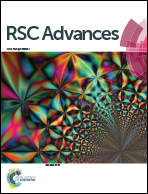Improving the photocatalytic activity of TiO2 through reduction
Abstract
The rutile TiO2 (110) surface reduced by the bridging oxygen vacancy, bridging hydroxyl group or Ti interstitial atom has been investigated by calculating their electronic structures using the density functional theory plus U method. It is found that defect states located in the forbidden band gap can enhance optical absorption. When the surface is highly reduced, the defect states approach the valence band. More importantly, defects induce a substantial up-shift of the conduction band edge, giving the reduced surface stronger reducibility. The shifts of both conduction and valence band edges are due to the dipole moments created by these defects.


 Please wait while we load your content...
Please wait while we load your content...